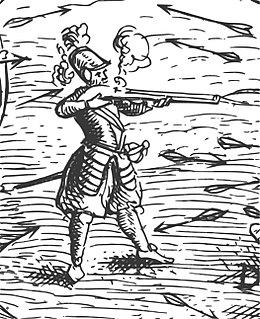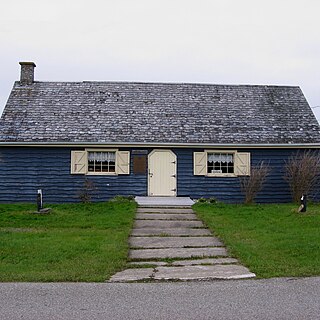External links
"Nicolas Aubry". Dictionary of Canadian Biography (online ed.). University of Toronto Press. 1979–2016.
Nicolas Aubry was a French priest who accompanied Pierre Dugua, Sieur de Monts to Acadia in 1604. There were two other clergy on this expedition, a priest who was to minister to the parish of Port Royal and a Protestant minister. This expedition had as its cartographer Samuel de Champlain. There were also 77 other settlers.
Champlain, in his writings, reported a violent quarrel over religion between the Protestant minister and a curé which ended in blows. The priest was, in all likelihood, Nicolas Aubry.
He also was recorded in writings from that time because of a mis-adventure which happened to him during his short visit to the New World. He became lost in the woods around Baie Sainte-Marie, Nova Scotia and survived for sixteen days on his own before being rescued from the shores of the Bay of Fundy by a fisherman. He returned to France after his recovery and the last known record of him is in 1611.
"Nicolas Aubry". Dictionary of Canadian Biography (online ed.). University of Toronto Press. 1979–2016.

Samuel de Champlain was a French colonist, navigator, cartographer, draftsman, soldier, explorer, geographer, ethnologist, diplomat, and chronicler. He made between 21 and 29 trips across the Atlantic Ocean, and founded Quebec, and New France, on 3 July 1608. An important figure in Canadian history, Champlain created the first accurate coastal map during his explorations, and founded various colonial settlements.

The French colonization of the Americas began in the 16th century and continued on into the following centuries as France established a colonial empire in the Western Hemisphere. France founded colonies in much of eastern North America, on a number of Caribbean islands, and in South America. Most colonies were developed to export products such as fish, rice, sugar, and furs.

Louis XIII was King of France from 1610 to 1643 and King of Navarre from 1610 to 1620, when the crown of Navarre was merged with the French crown.

Armand Jean du Plessis, Duke of Richelieu, commonly referred to as Cardinal Richelieu, was a French clergyman and statesman. He was also known as l'Éminence rouge, or "the Red Eminence", a term derived from the title "Eminence" applied to cardinals, and the red robes they customarily wore.
Étienne Brûlé was the first European explorer to journey beyond the St. Lawrence River into what is now known as Canada. He spent much of his early adult life among the Hurons, and mastered their language and learned their culture. Brûlé became an interpreter and guide for Samuel de Champlain, who later sent Brûlé on a number of exploratory missions, among which he is thought to have preceded Champlain to the Great Lakes, reuniting with him upon Champlain's first arrival at Lake Huron. Among his many travels were explorations of Georgian Bay and Lake Huron, as well as the Humber and Ottawa Rivers. Champlain agreed to send Brûlé, at his own request, as an interpreter to live among the Onontchataron, an Algonquin people, in 1610. In 1629, during the Anglo-French War, he escaped after being captured by the Seneca tribe. Brûlé was killed by the Bear tribe of the Huron people, who believed he had betrayed them to the Seneca.

Camisards were Huguenots of the rugged and isolated Cévennes region and the Vaunage in southern France. In the early 1700s, they raised a resistance against the persecutions which followed Louis XIV's Revocation of the Edict of Nantes, making Protestantism illegal. The Camisards operated throughout the mainly Protestant Cévennes region including the Vaunage and the parts of the Camargue around Aigues Mortes. The revolt broke out in 1702, with the worst of the fighting continuing until 1704, then skirmishes until 1710 and a final peace by 1715. The Edict of Tolerance was not finally signed until 1787.

Events from the 1600s in Canada.

Pierre Dugua de Mons was a French merchant, explorer and colonizer. A Calvinist, he was born in the Château de Mons, in Royan, Saintonge and founded the first permanent French settlement in Canada. He travelled to northeastern North America for the first time in 1599 with Pierre de Chauvin de Tonnetuit.

The Company of One Hundred Associates, or Company of New France, was a French trading and colonization company chartered in 1627 to capitalize on the North American fur trade and to expand French colonies there. The company was granted a monopoly to manage the fur trade in the colonies of New France, which were at that time centered on the Saint Lawrence River valley and the Gulf of Saint Lawrence. In return, the company was supposed to settle French Catholics in New France. The Company of One Hundred Associates was dissolved by King Louis XIV, who incorporated New France into a province in 1663.

Louis Hébert is widely considered the first European apothecary in the region that would later become Canada, as well as the first European to farm in said region. He was born around 1575 at 129 de la rue Saint-Honoré in Paris to Nicolas Hébert and Jacqueline Pajot. He married Marie Rollet on 19 February 1601 at the Church of Saint-Sulpice, Paris.
The Recollects were a French reform branch of the Friars Minor, a Franciscan order. Denoted by their gray habits and pointed hoods, the Recollects took vows of poverty and devoted their lives to prayer, penance, and spiritual reflection. Today, they are best known for their presence as missionaries in various parts of the world, most notably in early Canada.

The Schenectady massacre was an attack against the village of Schenectady in the colony of New York on 8 February 1690. A party of more than 200 Frenchmen and allied Mohawk and Algonquin warriors attacked the unguarded community, destroying most of the homes, and killing or capturing most of its inhabitants. Sixty residents were killed, including 11 enslaved Africans. About 60 residents were spared, including 20 Mohawk.

Nicolas Denys was a French-born explorer, colonizer, soldier and leader in New France. He founded settlements at St. Pierre, Ste. Anne and Nepisiquit.
Pierre-Gabriel Marest was a French Jesuit missionary in Canada.
The Catholic and Royal Armies is the name given to the royalist armies in western France composed of insurgents during the war in the Vendée and the Chouannerie, who opposed the French revolution.
Jean Nicolas Grou was a French Roman Catholic Jesuit priest, teacher, translator and mystic and spiritual writer. After the suppression of the Jesuit order, he sought sanctuary in the Dutch Republic. He returned to France, but at the outbreak of the French Revolution, he escaped to England where he gained refuge with a wealthy English household in Dorset whose house chaplain he became while continuing his literary output.

Charles de Condren, Cong. Orat., a Doctor of the Sorbonne, was a French mystic of the 17th century, and is considered a leading member of the French School of Spirituality.

The Socialist Party is a social-democratic political party in France. The PS was for decades the largest party of the French centre-left and used to be one of the two major political parties in the French Fifth Republic, along with The Republicans. It replaced the earlier French Section of the Workers' International in 1969 and is currently led by First Secretary Olivier Faure. The PS is a member of the Party of European Socialists, Progressive Alliance and Socialist International.
The Champlain Society seeks to advance knowledge of Canadian history through the publication of scholarly books of primary records of voyages, travels, correspondence, diaries and governmental documents and memoranda. The Society is named after Samuel de Champlain (1574–1635), the explorer, founder of New France and author of numerous exploratory narratives. The Society is a registered, not-for-profit charity administered by a voluntary and unpaid team of council members and officers. It was chartered in Ontario in 1927. Membership is open to all who have an interest in Canadian history. It is based in Toronto, Ontario.

Champlain's Dream: The European Founding of North America is a biography written by American historian, David Hackett Fischer and published in 2008. It is a biography of French "soldier, spy, master mariner, explorer, cartographer, artist and "Father of New France"", Samuel de Champlain. In this book, Fischer examines more closely Champlain's personal impact on the establishment of a French colony in the New World - securing royal support despite opposition from formidable foes like Marie de Medici and Cardinal Richelieu, negotiating with "Indian nations" and imbuing the new colony with the values of humanism. He is also remembered for having survived 27 crossings of the North Atlantic in 37 years - without ever losing a ship. Despite never being the "senior official" of New France, Champlain functioned as an absolute ruler and as Fischer shows, his vision for New France helps explain both its triumphs and failures.